By Holland Cooke
Consltant
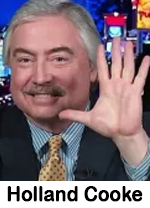 Feel busy? Try keeping-up with these four:
Feel busy? Try keeping-up with these four:
— Like George Clooney’s character in “Up In The Air,” Mike McVay attained an elite status earned by only a handful when Continental Airlines was the principal carrier in Cleveland, his home base. And he’s still at it, consulting full-time since 1984.
— “Rhode Island’s anchorman” is ultimate split-shifter Gene Valicenti, who hosts 3 hours of radio on WPRO at 6AM (11 years), then at 6PM he co-anchors on NBC10 TV (31 years), both top-rated shows.
— For 10 years I’ve been riding 138 miles with owner Jay Philippone from his home in Pittsburgh to Connect FM + Sunny 106 in DuBois PA. He lived there when his children were young, then moved to the Burgh’ when he bought stations in nearer West Virginia; and “because you get home quicker from Pirates and Penguins and Steelers games.”
— And for 20 years I’ve followed owner Paul Gleiser “106.3 miles door-to-door” from his home in Dallas to KTBB + KRWR in Tyler-Longview. Why the trek? “My wife gets to do what she wants to do” in the culturally rich Metroplex, and where she is a university professor.
How DO they do it?
“On the cusp of my 65th birthday,” Jay laughs, “that’s a good question!” As bosses, he and Paul are innately motivated. Gene sets the alarm for 5AM, but – because “I just can’t wait to get on the radio — I find myself getting up earlier,” to execute a show he and his producers mapped-out the day before.
Their love for our craft is clear. Mike says he’s “up late and up early because l absolutely love what I’m doing. I really don’t feel like I’m working for the most part.”
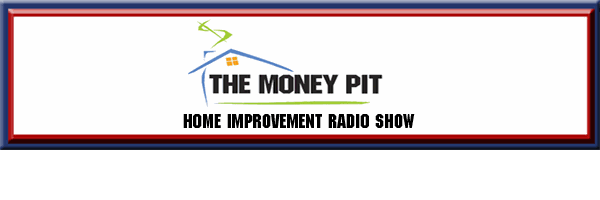
Their routine seems anything-but
Gleiser has gone-though “a lot of tires” making his trans-Texas trek 4 days a week since 1991 (on Wednesdays in his ATW Creative Services studio in Dallas). And he makes the most of all those miles: “I’m in the News and Talk business, so I use that time to consume news and keep myself current.” As does Philippone; and all that back-N-forth time affords them an invaluable perspective listening in-car, where AM/FM radio is still #1.
Mike McVay travels 3 weeks a month (down from 48 weeks X 5 days pre-pandemic), unlike Gene Valicenti’s 6AM + 6PM gigs that keep him closer to home. And, yes, Gene naps between shows (“30 minutes, longer makes it worse”). But by 5PM he’s in the bustling NBC10 newsroom, where “I start to work on the 6P TV script” he’s given, “which I go through and rewrite almost every story and tease, to make the copy sound like me.”
Technology: Friend or foe?
“Yes!” Gleiser quips. “There are only tradeoffs.” On the plus side, the pandemic-necessitated telecommuting that has transformed so many other industries has shown radio new options.
Jimmy Failla’s first affiliate remote was from KTBB, where – minutes before airtime – Internet service failed. If I hadn’t seen it in person, I wouldn’t have believed that we fed New York via an iPhone hotspot. And as Failla’s frequent fill-in, Paul has hosted the show from KTBB and from home in Dallas and in-studio at Fox/NY, and my trained ear can’t hear the difference. And when Valicenti does his radio show at home Monday and Friday mornings, he can even do his live NBC10 TV simulcast hit there.
Philippone raves about the Radio.cloud automation system “that allows us to work and manage the product and diagnose transmitter problems from anywhere.” But he confesses that “I’m still working on a perfect way to manage my In box, to be able to keep-up” with the volume of communication and information, the velocity of which is “lots faster than pre-Internet/pre-Email days.”
During my 17 years as McVay Media news/talk specialist, I learned lots from Mike about keeping organized. “Obsessive about detail and staying focused on the job at hand,” he types meeting notes in real-time. “I do everything I need to do as quickly as it can be done,” which also means making the most of all that time in-flight. He warns managers to “prioritize properly, so the crisis of one person doesn’t become a crisis for someone else.”
It takes a team
Gene Valicenti admits “I got lucky with two good producers,” one at WPRO the other at NBC10. “They’re both fast and technologically-savvy,” and his radio producer “can quickly find something during commercial breaks.” He talks with both producers several times each day, and they talk to each other. “It’s all about cross-promoting, cross-purposing” on-air material from station-to-station, win-win.
Paul Gleiser IS his stations. He has a PD, but he himself is owner, GM, Sales Manager, Promotion Manager, and choosy endorsement spot talent. “It’s an unusual management structure,” in which “everybody is in Sales, and everybody knows their job, and has tenure, almost zero turnover” (the last couple openings were because two longtime staffers died suddenly, too young).
Jay Philippone is at his Pennsylvania stations Mondays (interacting with each staffer and finalizing his visit to-do list) and Tuesdays (“meetings day”) and Wednesdays (follow-through). He has a full-time GM and “she’s been on the job 30 years next month, someone to make sure things get done and ‘the trains run on time.’”
Hitting Pause
Mike urges “find time to turn it off. Let your brain be on rest, and entertain yourself.” He’s a sports fan, and binge-watches his favorite TV shows. Jay will “take a half day and not work, just read,” and he calls that decompression “really, really worthwhile.”
But retirement? McVay: Nope. Gleiser: “And do WHAT?” Philippone: “I’ve been in radio since I was 19 and I love what I do.” When I ask “If you didn’t do this?” Jay admits “I don’t have an answer,” and he thinks “it would be easy to lose a sense of direction.” As did his retired friend who said “it sucks.”
Valicenti is struck by the reach of WPRO’s station stream: “You would not believe how many rely on it,” and when it hiccups “we hear about it!” And not just from locals using the station app and smart speakers. He has a big following in Florida, seasonal snowbirds and Rhode Island ex-pat retirees who are frequent callers. When the time comes? “Maybe doing a radio show from Florida,” where – vacationing recently in Naples – he was greeted by New England accents when spotted in restaurants callers had recommended.
Holland Cooke (HollandCooke.com) is a consultant working at the intersection of broadcasting and the Internet. He is the author of “Confidential: Negotiation Checklist for Weekend Talk Radio” and “Close Like Crazy: Local Direct Leads, Pitches & Specs That Earned the Benjamins.” Follow HC on Twitter @HollandCooke
Share this with your network
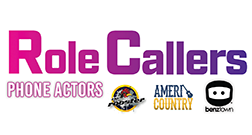 voice acting services for cash or barter, directed by Benztown producers in collaboration with station program directors and producers, and totally customized to their needs… The actors call in to radio stations, asking questions, playing along with comedy bits, sharing local information, talking up contests and promotions, and more – all according to the specific needs of each station.” Benztown president Dave “Chachi” Denes says, “We live in a digitally overloaded world, and human interaction and connectivity have become increasingly crucial. Role Callers serves as an invaluable tool, effectively sparking live listener engagement on some of the nation’s most prominent morning shows.”
voice acting services for cash or barter, directed by Benztown producers in collaboration with station program directors and producers, and totally customized to their needs… The actors call in to radio stations, asking questions, playing along with comedy bits, sharing local information, talking up contests and promotions, and more – all according to the specific needs of each station.” Benztown president Dave “Chachi” Denes says, “We live in a digitally overloaded world, and human interaction and connectivity have become increasingly crucial. Role Callers serves as an invaluable tool, effectively sparking live listener engagement on some of the nation’s most prominent morning shows.”


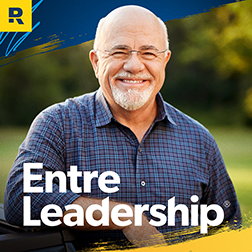 feature a new, caller-driven format in which he’ll “take calls from America’s small-business owners to help guide them through the unique challenges they face as leaders in business.” Ramsey says, “Thirty years ago, I started my business from a card table in my living room. I know how hard it is to grow a business and grow yourself. I’m more fired up than ever to come alongside leaders that are in the trenches, scratching and clawing to transform business as usual into the business they dreamed of. This show is everything you wanted to know about business and leadership, but you didn’t know who to ask.” Dave Ramsey is also the author of the #1 best-selling book, EntreLeadership.
feature a new, caller-driven format in which he’ll “take calls from America’s small-business owners to help guide them through the unique challenges they face as leaders in business.” Ramsey says, “Thirty years ago, I started my business from a card table in my living room. I know how hard it is to grow a business and grow yourself. I’m more fired up than ever to come alongside leaders that are in the trenches, scratching and clawing to transform business as usual into the business they dreamed of. This show is everything you wanted to know about business and leadership, but you didn’t know who to ask.” Dave Ramsey is also the author of the #1 best-selling book, EntreLeadership.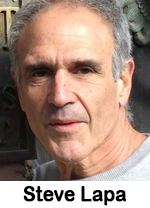 The work-life balance concept is up for a new spin. Let us start in California.
The work-life balance concept is up for a new spin. Let us start in California. don’t need to manage multiple participants such as a solo contributor or reporter in the field. Comrex says that Gagl is simple enough for anyone to use and doesn’t require any specialized hardware or software on the remote end for implementation. With a computer or smartphone plus a headset, high-quality audio can be transmitted bidirectionally with minimal latency providing a simple way to get anyone on the air. Hotline dramatically improves the quality of a standard cell phone call for on-air use. Gagl + Hotline provides a ten-digit telephone number with each Gagl + Hotline subscription. A guest or reporter can call the number using an AT&T, T-Mobile or Verizon cell phone. The caller’s audio will be presented within the Gagl interface in HD Voice quality for clean, clear full fidelity for use on-air. Acquiring high-quality audio from remote locations is essential for creating compelling radio. Providing flexibility for guests who can’t come into the studio was a driving force behind Gagl’s creation. Gagl Solo, Gagl + Hotline, and Comrex’s suite of broadcast reliable products will be on display at the NAB Show in Vegas April 14-17. Be sure to visit Comrex at Booth C2234 in Central Hall.
don’t need to manage multiple participants such as a solo contributor or reporter in the field. Comrex says that Gagl is simple enough for anyone to use and doesn’t require any specialized hardware or software on the remote end for implementation. With a computer or smartphone plus a headset, high-quality audio can be transmitted bidirectionally with minimal latency providing a simple way to get anyone on the air. Hotline dramatically improves the quality of a standard cell phone call for on-air use. Gagl + Hotline provides a ten-digit telephone number with each Gagl + Hotline subscription. A guest or reporter can call the number using an AT&T, T-Mobile or Verizon cell phone. The caller’s audio will be presented within the Gagl interface in HD Voice quality for clean, clear full fidelity for use on-air. Acquiring high-quality audio from remote locations is essential for creating compelling radio. Providing flexibility for guests who can’t come into the studio was a driving force behind Gagl’s creation. Gagl Solo, Gagl + Hotline, and Comrex’s suite of broadcast reliable products will be on display at the NAB Show in Vegas April 14-17. Be sure to visit Comrex at Booth C2234 in Central Hall.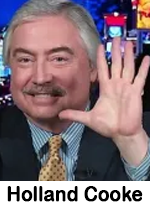 Pick a day, any day. At least one news item will have the little voice in your head hollering “TELL me you’re kidding!” After recent headlines, and as various plots thicken, that little voice might need a lozenge.
Pick a day, any day. At least one news item will have the little voice in your head hollering “TELL me you’re kidding!” After recent headlines, and as various plots thicken, that little voice might need a lozenge.
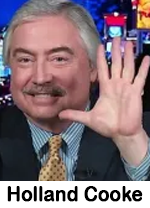 If
If 
 Music, and it reached #1 in the Business category on Spotify in 2023. Program co-host Dave Ramsey says, “Thank you to everyone who works daily on our show. And thanks to all our listeners for choosing to spend your time with the Ramsey personalities and me. I’m honored.” On the program, Ramsey is joined each day by a rotating cast of co-hosts, including Rachel Cruze, Ken Coleman, Jade Warshaw, George Kamel and Dr. John Delony. The Ramsey Network says that in 2023, callers to the show paid off more than $36 million in debt, inspiring the millions of people that listen to the show on podcast and radio or watch on YouTube.
Music, and it reached #1 in the Business category on Spotify in 2023. Program co-host Dave Ramsey says, “Thank you to everyone who works daily on our show. And thanks to all our listeners for choosing to spend your time with the Ramsey personalities and me. I’m honored.” On the program, Ramsey is joined each day by a rotating cast of co-hosts, including Rachel Cruze, Ken Coleman, Jade Warshaw, George Kamel and Dr. John Delony. The Ramsey Network says that in 2023, callers to the show paid off more than $36 million in debt, inspiring the millions of people that listen to the show on podcast and radio or watch on YouTube. 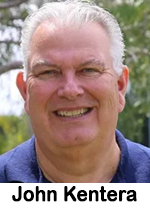 told by Audacy management he’s being let go as the company is looking for a change in middays and wants a “less caller-driven show.” Kentera adds, “I prepare like crazy, I think my show is good, well-received, so I was stunned when I was told I was being fired.” The 65-year-old Kentera has been in radio for 40 years, the last four with KWFN-FM and says he does not plan to retire. “I’m going to look for an opportunity in sports… in or out of the radio business. I’m not done yet.”
told by Audacy management he’s being let go as the company is looking for a change in middays and wants a “less caller-driven show.” Kentera adds, “I prepare like crazy, I think my show is good, well-received, so I was stunned when I was told I was being fired.” The 65-year-old Kentera has been in radio for 40 years, the last four with KWFN-FM and says he does not plan to retire. “I’m going to look for an opportunity in sports… in or out of the radio business. I’m not done yet.”  why we won’t stop helping people get out of debt. When you aren’t weighed down by payments, you can live and GIVE like no one else.” Examples of giving include Ramsey listeners helping Sarah, a widowed mother of four, get current on her mortgage payments so she wouldn’t lose her house. A single mother of three received $2,500 to help with Christmas. Shoppers at Kroger had their groceries paid for. A church helped a couple get back on their feet after a job loss. Even Ramsey employees got into the act. Melissa kicked off the show with the story of her three-year fight against an aggressive form of breast cancer. She told listeners how Ramsey Solutions rallied around her, paid her full salary while she was out and provided the family with meals, prayer, and support. The Ramsey Network says, “‘The Annual Giving Show’ wraps up a wildly successful year for the Ramsey network. ‘The Ramsey Show’ is the second largest nationally syndicated radio show. It’s now heard on more than 640 stations. The YouTube audience has more than 100,000 subscribers and 250 million views. And ‘The Ramsey Show’ podcast is only the fourth show ever to eclipse one billion downloads.”
why we won’t stop helping people get out of debt. When you aren’t weighed down by payments, you can live and GIVE like no one else.” Examples of giving include Ramsey listeners helping Sarah, a widowed mother of four, get current on her mortgage payments so she wouldn’t lose her house. A single mother of three received $2,500 to help with Christmas. Shoppers at Kroger had their groceries paid for. A church helped a couple get back on their feet after a job loss. Even Ramsey employees got into the act. Melissa kicked off the show with the story of her three-year fight against an aggressive form of breast cancer. She told listeners how Ramsey Solutions rallied around her, paid her full salary while she was out and provided the family with meals, prayer, and support. The Ramsey Network says, “‘The Annual Giving Show’ wraps up a wildly successful year for the Ramsey network. ‘The Ramsey Show’ is the second largest nationally syndicated radio show. It’s now heard on more than 640 stations. The YouTube audience has more than 100,000 subscribers and 250 million views. And ‘The Ramsey Show’ podcast is only the fourth show ever to eclipse one billion downloads.” News flash: Time cannot be managed. But tasks can.
News flash: Time cannot be managed. But tasks can.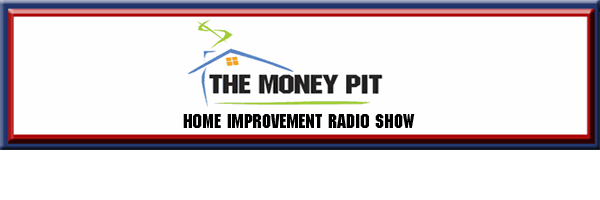
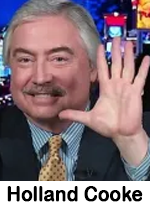 Here’s actual news copy, from Joe Connolly’s business report one morning on WCBS, NY: “One third of all domestic flights are now late, by an average of one hour.”
Here’s actual news copy, from Joe Connolly’s business report one morning on WCBS, NY: “One third of all domestic flights are now late, by an average of one hour.”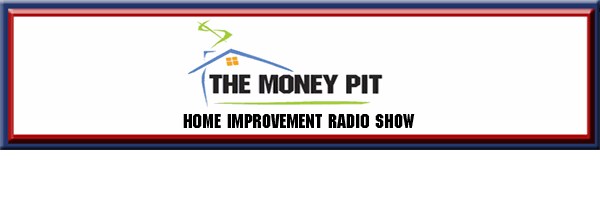
 I am always impressed when I see-and-hear radio and TV stations swapping product.
I am always impressed when I see-and-hear radio and TV stations swapping product.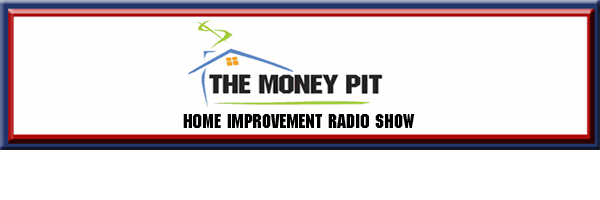
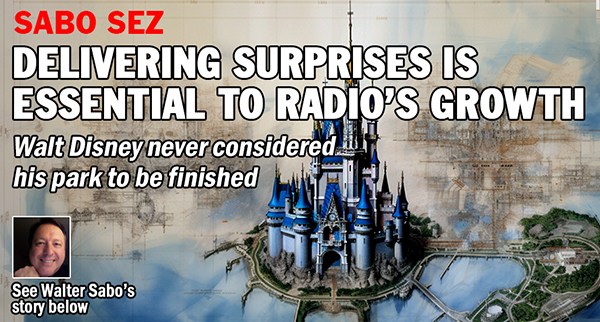
 Feel busy? Try keeping-up with these four:
Feel busy? Try keeping-up with these four:
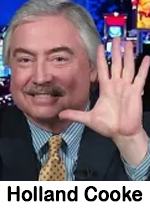 After post-consolidation cutbacks have whacked local on-air content, there’s now angst that Artificial Intelligence can – literally – dehumanize radio (and other media – HUGE issue in the SAG-AFTRA strike). Voice cloning is child’s play; and several vendors are already peddling AI gimmicks to radio stations.
After post-consolidation cutbacks have whacked local on-air content, there’s now angst that Artificial Intelligence can – literally – dehumanize radio (and other media – HUGE issue in the SAG-AFTRA strike). Voice cloning is child’s play; and several vendors are already peddling AI gimmicks to radio stations.
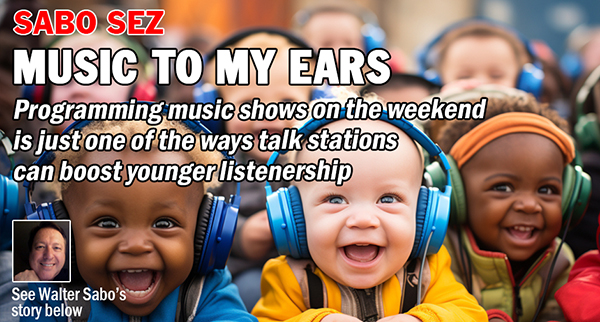
 The persistent liability of most talk stations is that they attract a high percentage of listeners over the age of 65. Consider that many of those older listeners are attracted to radio shows that are talking for companionship and comfort.
The persistent liability of most talk stations is that they attract a high percentage of listeners over the age of 65. Consider that many of those older listeners are attracted to radio shows that are talking for companionship and comfort.